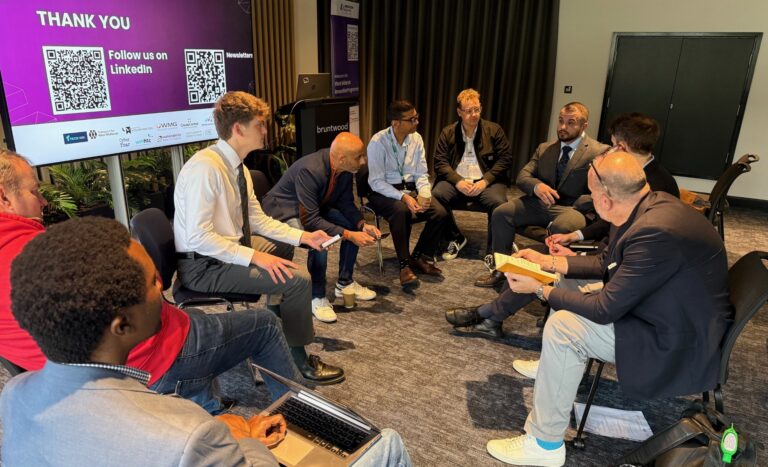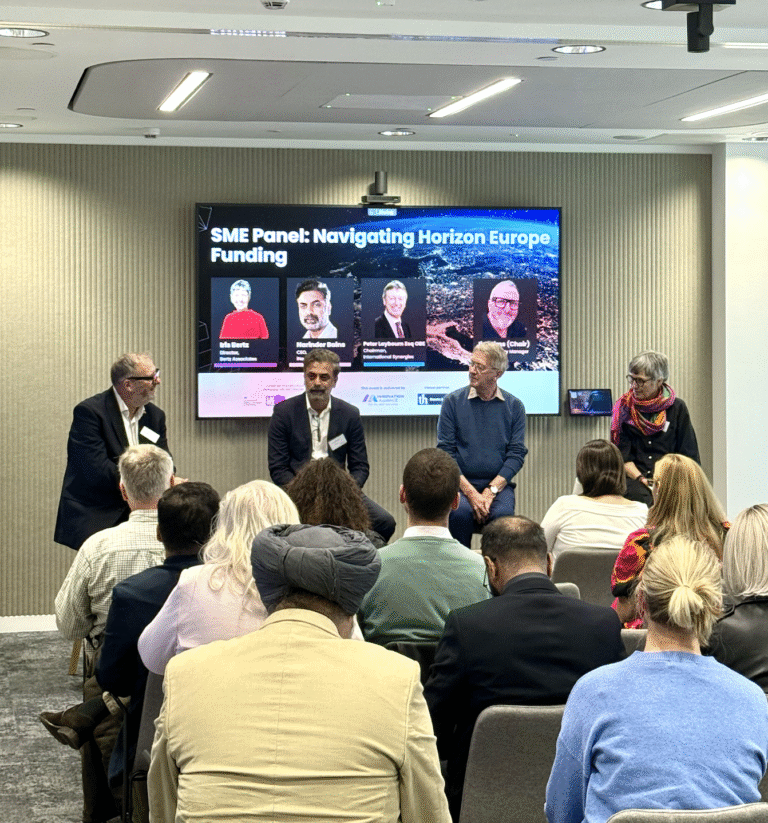Source: STEAMhouse
“The techniques that STEAMhouse guided us through enabled some great insights we had not imagined and ideas and solutions came about through a highly collaborative, interactive, and creative approach – all online! I highly recommend anyone to engage in the STEAM Challenge process. You won’t regret it!” – Richard Haynes, Innovation Manager, Walsall Housing Group.
Typically a STEAM Challenge is a one or two day workshop designed to enable organisations and individuals from across disciplines to tackle product, service, or social challenges, and test new ideas through a design-thinking innovation process. We guide participants through a series of creative activities that help them get under the skin of the problem they’re trying to solve, generate new ideas to tackle the problem and begin to test those ideas with lightweight prototypes. Think mapping, sketching, analysing, and making – not the easiest thing to replicate when we’re all stuck at home! Thankfully our latest STEAM Challenge provided the perfect opportunity to dive in and create our first series of virtual collaborative workshops.
Finding the right format
Platforms like G-Suite, Slack, Teams, and Zoom are changing the way we work together but they were designed to complement, rather than replicate face-to-face collaboration. When people come together they get things done, learn and have fun. Collaboration turbo-boosts complex problem solving and it enables a variety of practitioners to coordinate their work and share valuable learning – this kind of cross-pollination is essential to STEAM innovation and here’s how we made it happen 100% online:
- We never went over two hours – Working online is exhausting, even more so when you’re problem solving, keep workshop timing tight and make the work purposeful.
- We kept participant numbers low – Go for no more than 16 people online at any given time. For collaboration to work, conversation is key – imagine giving each person two minutes to speak for every exercise, the minutes add up and eat into your precious two hours together!
- We used a ‘digital wallspace’ – We went for Miro but there’s plenty out there (Mural’s great too), just try to find a platform that’s intuitive and accessible for all participants, you’ll need to spend time training everyone up first. Our tip would be to go for the one that best replicates the experience of pinning and sorting stuff on a wallspace in a workshop environment.
- We were militant about timings, timings, timings – Go for 30-minute group exercises, keep participants on their toes, and build in competition to keep things exciting. Do what you can to keep people engaged and energised. Like any workshop, collaboration works best when people are comfortable and enjoying themselves.
- Create your ‘Zorms’ – These are your rules of engagement, best outlined upfront. You might want to ask people to turn off unnecessary notifications, ensure they keep their cameras switched on, or just remind everyone to keep loaded up with drinks and snacks. One of our Zorms was ‘Some things will work, Some things won’t’, it’s important to recognise that working online is still a bit weird and things can always go wrong. Once everyone understands your ‘Zorms’, you’re good to go!
Convening for creative collision
One advantage of having to keep participant numbers low is that you can be a little more selective about the voices required in the ‘room’ to make it a meaningful exercise. Now more than ever, we’re all a bit exhausted with screen-time, so aim to put people’s talents, time and energy to their best use. At STEAMhouse, a diversity of perspectives is crucial to creative problem solving, but remember you’re collaborating, not facilitating a discussion forum, so try to design a bit of creative collision into your activities, this can often be a really powerful way to generate new ideas.
Getting the activities right
Each of our 2-hr sessions followed a similar structure – we started light and gradually built to more challenging, collaborative work as we progressed.
Ice-breakers are always a great way to kick-off any workshop (as long as they’re designed well), we used ours as an opportunity to iron out any tech issues and remind participants of how to use the Miro tools, in a fun way. My favourite was ‘Superhero Hellos’ – we asked participants to draw their superhero alter-ego to introduce themselves and describe the skills and expertise they’re bringing to the workshop – it was perfect no-pressure fun because everyone’s bad at drawing in Miro!
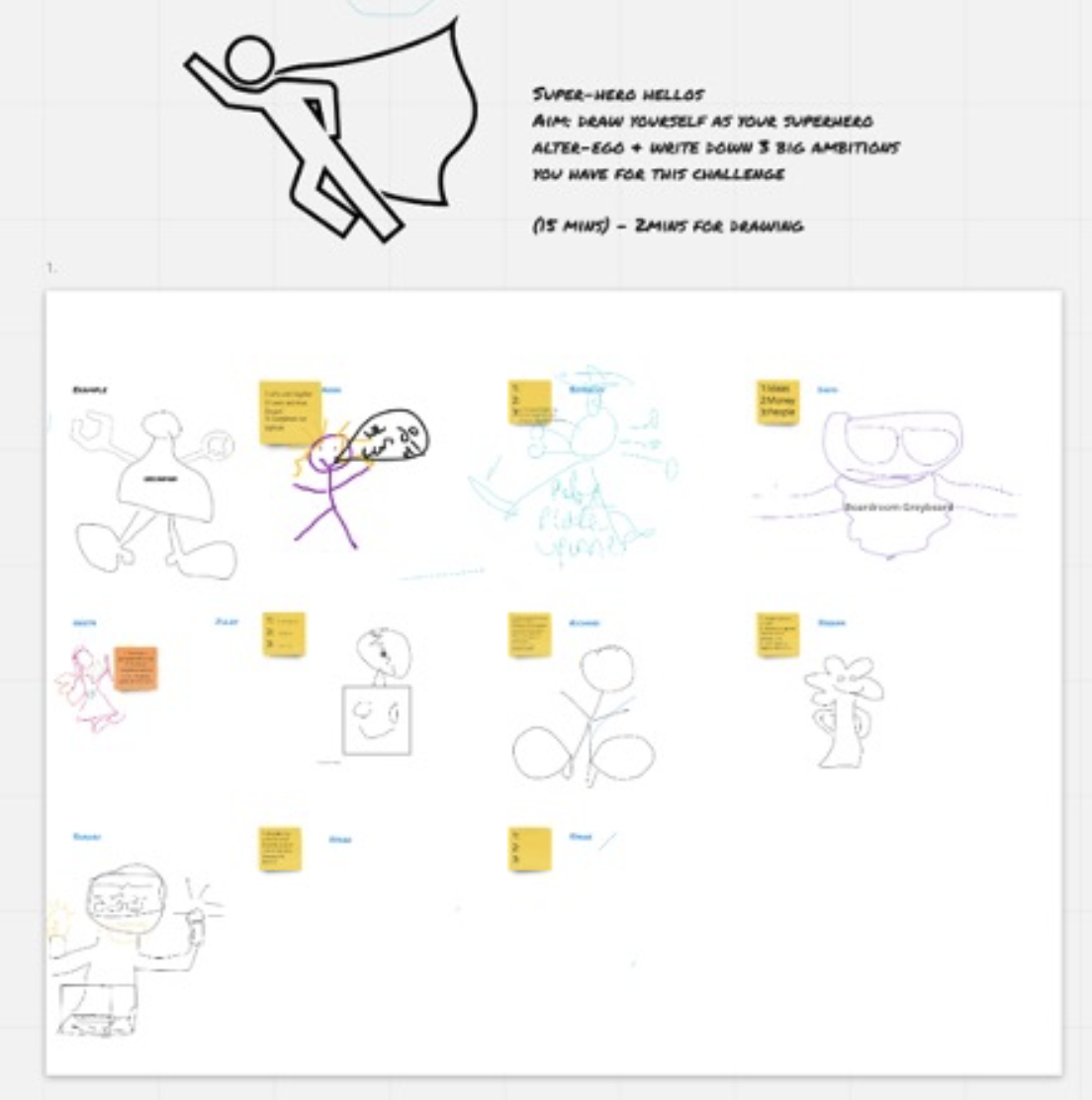

We worked on no more than 4 exercises per session, with the 3rd being where we spent most time as a group, this left the final exercise for reflection and ‘cool-down’. Every workshop is different and you’ll design your activities to suit but we learned a few things that might be helpful to you for your first virtual workshop:
- Aesthetics are important, make your participants feel like they’ve landed in a place that’s been considered – treat the design of your worksheets and assets as well as you would in the real world, by doing so you’ll avoid visual clutter and participants will feel cared for.
- Ask participants to do just one thing per exercise and keep each exercise on it’s own canvas, make it purposeful.
- Label workspaces clearly so people know where they need to be on the screen and write instructions next to their workspace, inevitably some people won’t be listening when you instruct them what to do next.
- Lock any content you don’t want participants to move around, it’s all too easy to click on stuff and delete it if you’re just getting used to the software.
- Assign an instructor and a facilitator, the instructor is there to answer questions and keep things on track. At the same time the facilitator is tidying up and checking in on participants work to ensure they’ve understood what they need to do.
- Finally, and most importantly, build in some fun elements, we created digital prizes, dropped in videos and created ‘rooms’ – whatever you can think of is pretty much possible in a virtual space – get creative!
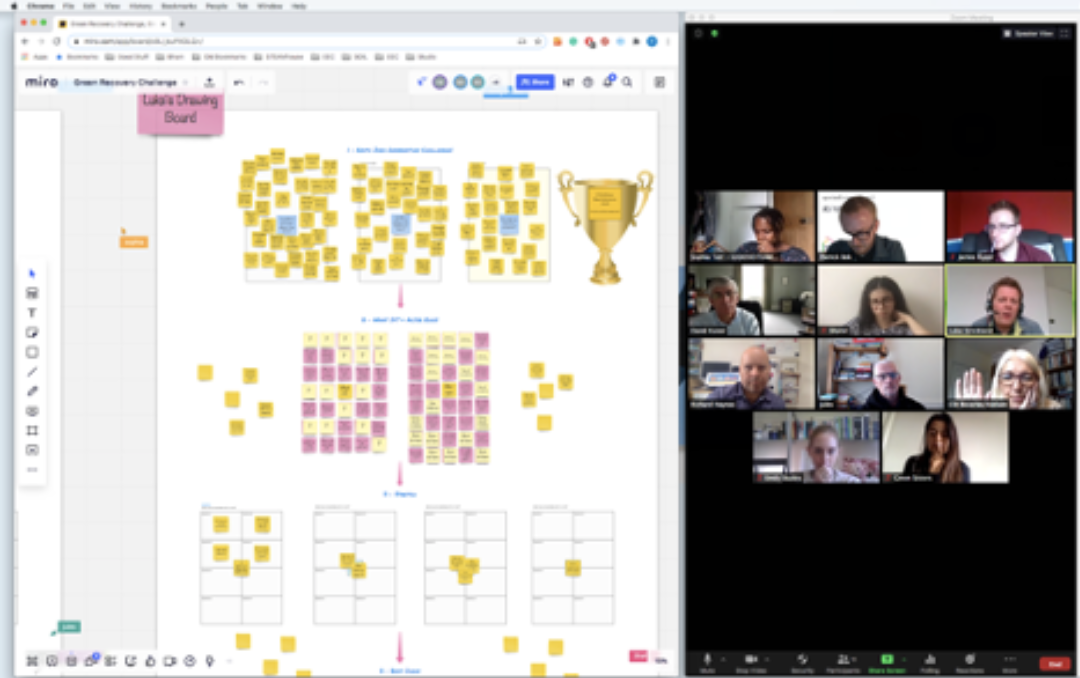
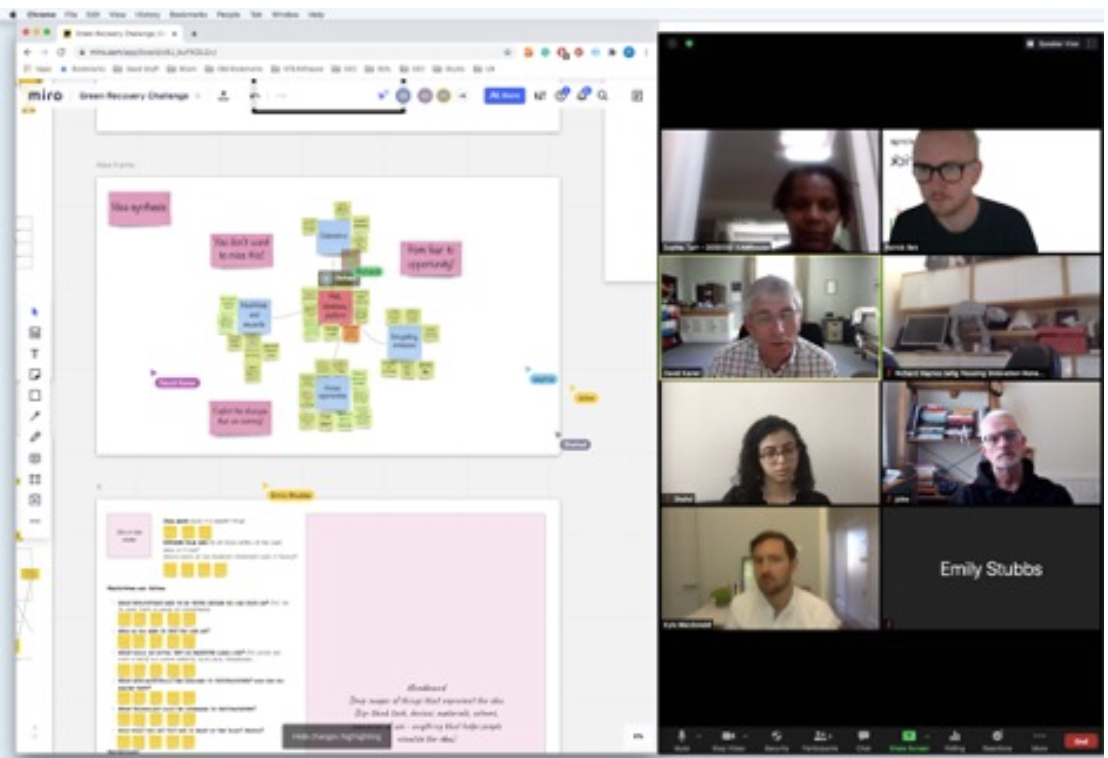
Start your own STEAM Challenge!
If you or your organisation have a critical business or social challenge that you’d like to tackle fast with the support of STEAMhouse, get in touch to find out how we can support.


